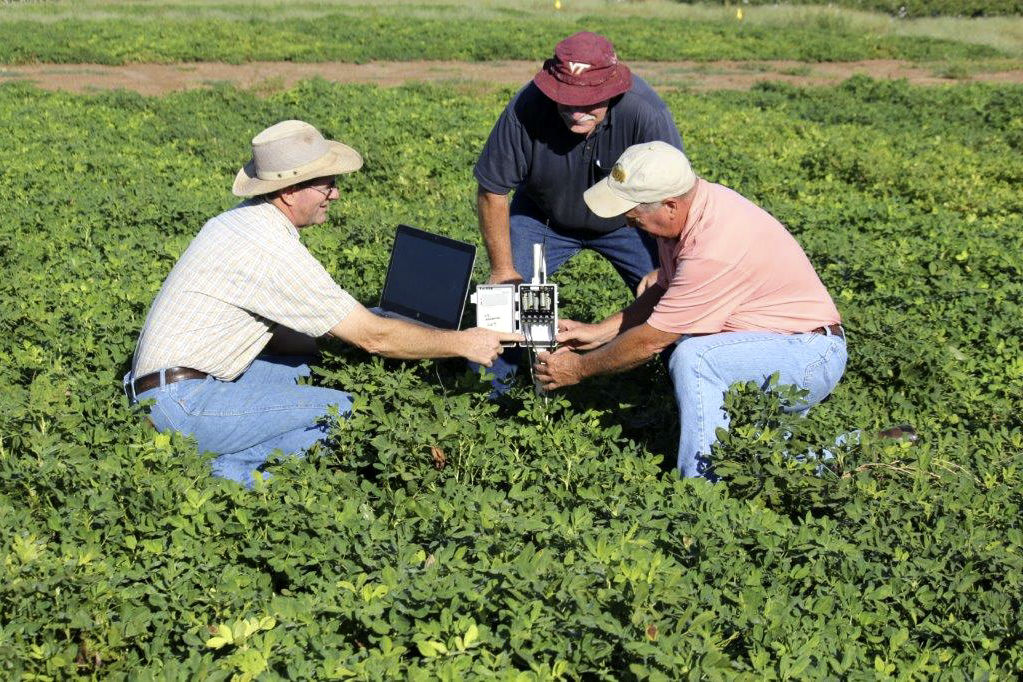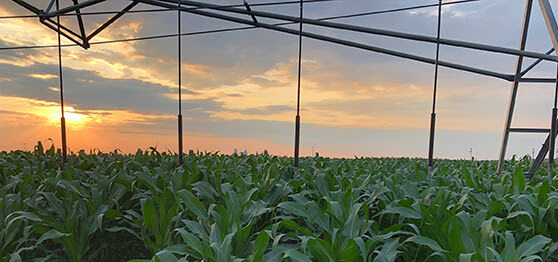In the world of peanuts, Georgia is king, growing over 46 percent of the U.S. crop. So where better to locate a laboratory dedicated to solving problems of the U.S. peanut industry?
In Dawson, Georgia, on Nov. 22, the National Peanut Research Laboratory celebrated 50 years of research on the popular legume. At the lab, which is part of the Agricultural Research Service, scientists in various disciplines work together to find ways to develop and grow peanuts better and more efficiently, no matter where they are planted, and to maintain their quality and safety after harvest.
NPRL scientists take a whole-farm view of peanut production, and the lab’s research leader, Marshall Lamb, is invested in this research in a unique way: He was a peanut farmer and is still active on his brother’s farm on a daily basis. “The National Peanut Research Laboratory is unique among institutions conducting peanut research because our scientists are conducting research that touches every segment of the peanut industry, from the farm to consumers’ tables,” Lamb says.
Making decisions easier
Improvements to irrigation methods are among the lab’s most valued achievements. For example, says Lamb, “Irrigator Pro for Peanuts is a decision-support system developed at NPRL. It improves irrigation scheduling and gives precise recommendations for timing and irrigation water amounts. It has proven helpful for peanut growers, with documented increases in peanut yield and grade by 400 pounds per acre. These increases equate to increased net revenue of $60.25 per acre, which then equates to $5.5 million per year increased revenue in Georgia alone.”
Cotton and corn are included in decision-support systems because they are the two crops most commonly rotated with peanuts.
Every drop counts
Agronomist Ron Sorensen’s research is focused on providing the optimal amount of water via drip irrigation to peanuts, cotton, and corn. “We are comparing deep and shallow subsurface drip irrigation to traditional overhead sprinkler irrigation,” he says. Deep subsurface systems have drip lines buried 8 to 12 inches below the soil surface and have a life span of 15 years or more. Shallow subsurface irrigation systems are buried only 2 to 3 inches deep and have a life span of about 5 years or longer—but are 50 to 66 percent less expensive to install.
ARS research shows increased net returns with shallow subsurface irrigation compared with either deep subsurface or sprinkler irrigation when averaged across whole-farm crop rotations. Therefore, shallow subsurface irrigation systems can outperform, from a yield and economic standpoint, both deep subsurface and overhead sprinkler irrigations systems in a whole cropping system.
Biochemist Phat Dang focuses on identifying genetic markers for improved drought tolerance and water use efficiency. Dang utilizes NPRL’s Environmental Control Plot Facility to conduct this research, and results are currently used in a collaborative breeding program with Auburn University’s Dr. Charles Chen. “Our control plot facility is unique because in addition to precisely controlling water, we can also control soil temperature through both heating and cooling soils to expedite research findings,” says Lamb.
Quality and safety
NPRL also delves into many aspects of U.S. peanut quality and safety. Agricultural engineers Chris Butts and Hank Sheppard focus on equipment, instrumentation, and systems to harvest, transport, dry, process, and store peanuts, and assess their quality and value.
“Like most commodities, peanut quality is at its best at harvest, and the goal is to maintain that quality until it reaches consumers,” says Butts. “Properly engineered systems for cleaning, drying, transporting, storing, and shelling peanuts are vital to maintaining peanut quality and safety.”
Many factors go into determining peanut value, such as kernel size, foreign material, visual damage, discoloration, and the presence of aflatoxin. NPRL’s research results are used by USDA’s Agricultural Marketing Service to increase the accuracy and repeatability of the measurements in the official peanut grading system.
“Bulk processors who buy peanuts use ARS-developed software and technology to manage their peanut drying systems, improving processing and handling efficiency during the hectic harvest season,” says Sheppard.
Also, because of recent NPRL research data, the peanut industry has changed how it stores peanuts, raising the cold storage temperature from between 38°F and 41°F to 55°F. “This temperature rise will reduce energy use by as much as 50 percent while maintaining peanut quality in storage,” says Butts.
Understanding peanut pathogens
Chemist Victor Sobolev and geneticist Alicia Massa focus on peanut self-protection from fungal diseases and toxin contamination. The common soil fungus Aspergillus flavus can invade peanuts, and under prolonged drought stress may contaminate them with aflatoxins. The “aflatoxin problem” is costly to the peanut industry, but strict government- and industry-imposed regulations are followed to ensure that the United States delivers the highest quality peanuts in the world to consumers.
Sign up for HPJ Insights
Our weekly newsletter delivers the latest news straight to your inbox including breaking news, our exclusive columns and much more.
“Under favorable conditions, peanuts can naturally resist fungal attacks by promptly producing antimicrobial compounds called phytoalexins,” says Sobolev. “We are using this knowledge to develop peanuts with greater pest resistance.”
Such knowledge and emerging technologies are crucial for breeding and/or modifying new fungi-resistant peanut cultivars. “We have made significant progress in this field, which has pioneered phytoalexin research ‘at the bench,’ and we are working to bring it to farmers’ fields,” says Sobolev.
NPRL researchers developed new, simple, and cost-efficient aflatoxin analysis methods now being used by the scientific community and some labs within the peanut industry.
Making peanuts resistant to fungi like A. flavus is one part of the solution. The other is to identify genes that are responsible for fungal infection and determine their role in overcoming peanut resistance. Massa is identifying desirable genes from wild peanut species that can improve disease resistance, drought tolerance, and nutritional value.
Plant pathologist Renee Arias works to help peanuts thrive in the presence of common pathogens, such as those causing early and late leaf spot (Cercospora arachidicola and Cercosporidium personatum, respectively). To better understand how to thwart peanut pathogens, it is necessary to understand each pathogen and how it interacts with peanuts.
“This includes knowing the many genes involved in plant invasion and plant health and using that information to develop novel methods or technologies to control diseases,” says Massa. “Our research results are being used worldwide by the peanut community, academic institutions, the pesticide industry, peanut farmers, peanut shellers, and other ARS researchers.”
As NPRL marks a half century of important advances, its future looks as bright as its past. Says Lamb, “Addressing the peanut industry’s needs as a system, from farm to fork, is the foundation of our lab’s mission, and serves the peanut industry well.”




